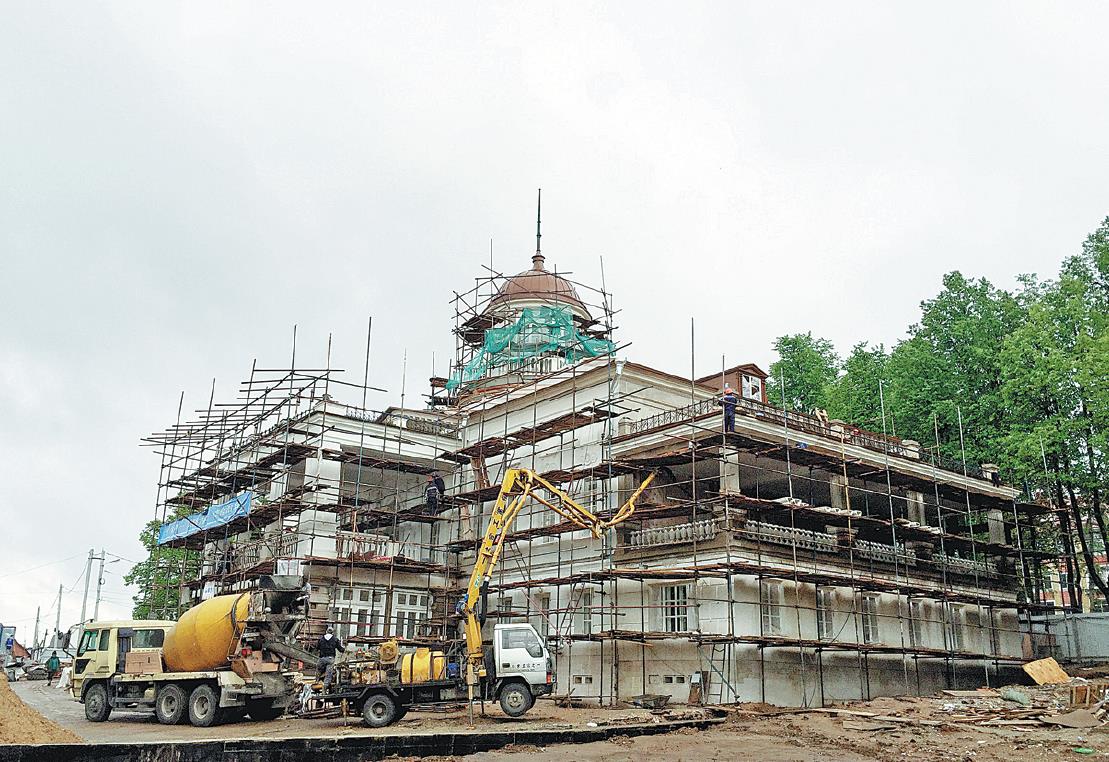Construction company, Russian partner team up for innovation breakthroughs
By Cheng Yu | China Daily | Updated: 2020-07-24 10:05

China Construction First Group Corp Ltd, a unit of centrally administered State-owned giant China State Construction Engineering Corp, is enhancing its ties with partners in Russia to ramp up innovation efforts in engineering work, as well as expand its presence in overseas markets.
Having first entered the Russian market in 2005, the unit has played a major role in the construction of several important projects, including a tower of the Federation Tower, a complex of two skyscrapers at the Moscow International Business Center in the nation's capital.
Last month, cooperation was further deepened as an engineering construction document co-authored by the SOE and Moscow State University of Civil Engineering was published in a Russian international academic journal.
The paper's main focus is how building information modeling technology, or BIM, can help in the restoration of Russia's historic buildings.
Andrey Pustovgar, one of the paper's authors and vice-president of Moscow State University of Civil Engineering, said the core of BIM technology is a three-dimensional computer model database, which can be applied to the entire life cycle of engineering construction including mapping, design, construction, operations and maintenance.
The cooperation marks an achievement made during the China-Russia Year of Scientific and Technological Innovation, a platform for the two nations to promote fast-track collaboration in fields including advanced technology and biosecurity.
"BIM technology plays a key role in keeping efficient communication and exchanges between upstream and downstream companies, so as to realize the information management of the entire life cycle of engineering projects," Pustovgar said.
He added that it was not until a few years ago that BIM technology was first widely used in Russia and the number of applications in historic construction restoration was rare.
The unit in 2016 finished renovating the permanent exhibition hall of the conference site of the 6th National Congress of the Communist Party of China (CPC) in Moscow several days ahead of schedule.
The site is important in the course of China's revolution and is a significant symbol of the friendship between the two countries.
"It took us just 293 days to complete the restoration," said Yuan Wencen, who participated both in the paper writing and the restoration project.
During the process, Yuan said BIM technology played an important role in solving a series of problems, especially in the structural repair, decor, mechanical and electrical installations of Russia's historic structures.
Yuan recalled that when the unit received construction permit approval in September 2015, there were fewer than 300 days left before the planned completion time.
"Winter was coming in Russia, and the construction could only get started five months later due to local regional management requirements.
"However, the biggest challenge then was not time. It was more difficult to collect all kinds of construction data accurately from ruins rather than drawings," Yuan added.
To tackle the bottleneck, the unit formed a BIM team and applied the international leading ancient building restoration 3D-scanning technology to solve the problem. As the dome of the building is a classical Russian-style building with a complex structure, the team quickly established a BIM model of the dome structure, handed it over to the builder and made additional detailed plans.
Zhu Rongrong, another paper author who joined the restoration project, said that BIM technology was also used in the construction management process. For instance, the technology was used to generate window statistics and mechanical and electrical pipeline engineering quantity schedules to control construction costs.
"We also leveraged the technology to generate 4D construction simulation animations to improve the communication efficiency of all parties involved in the construction so that the construction speed of the project could be hastened," she said.
























